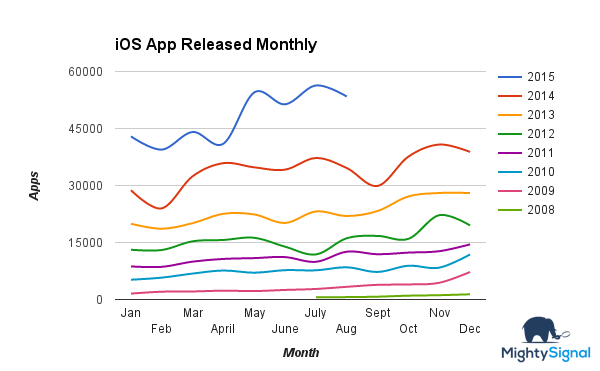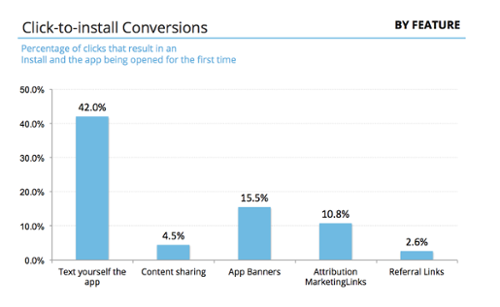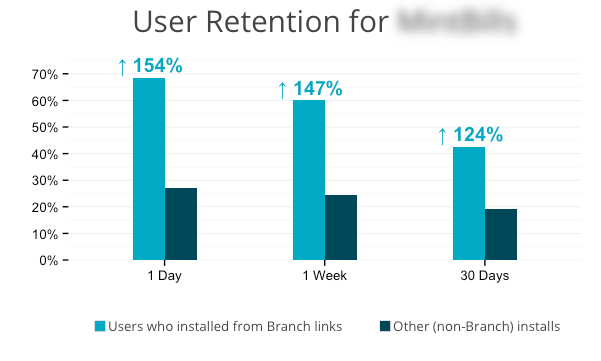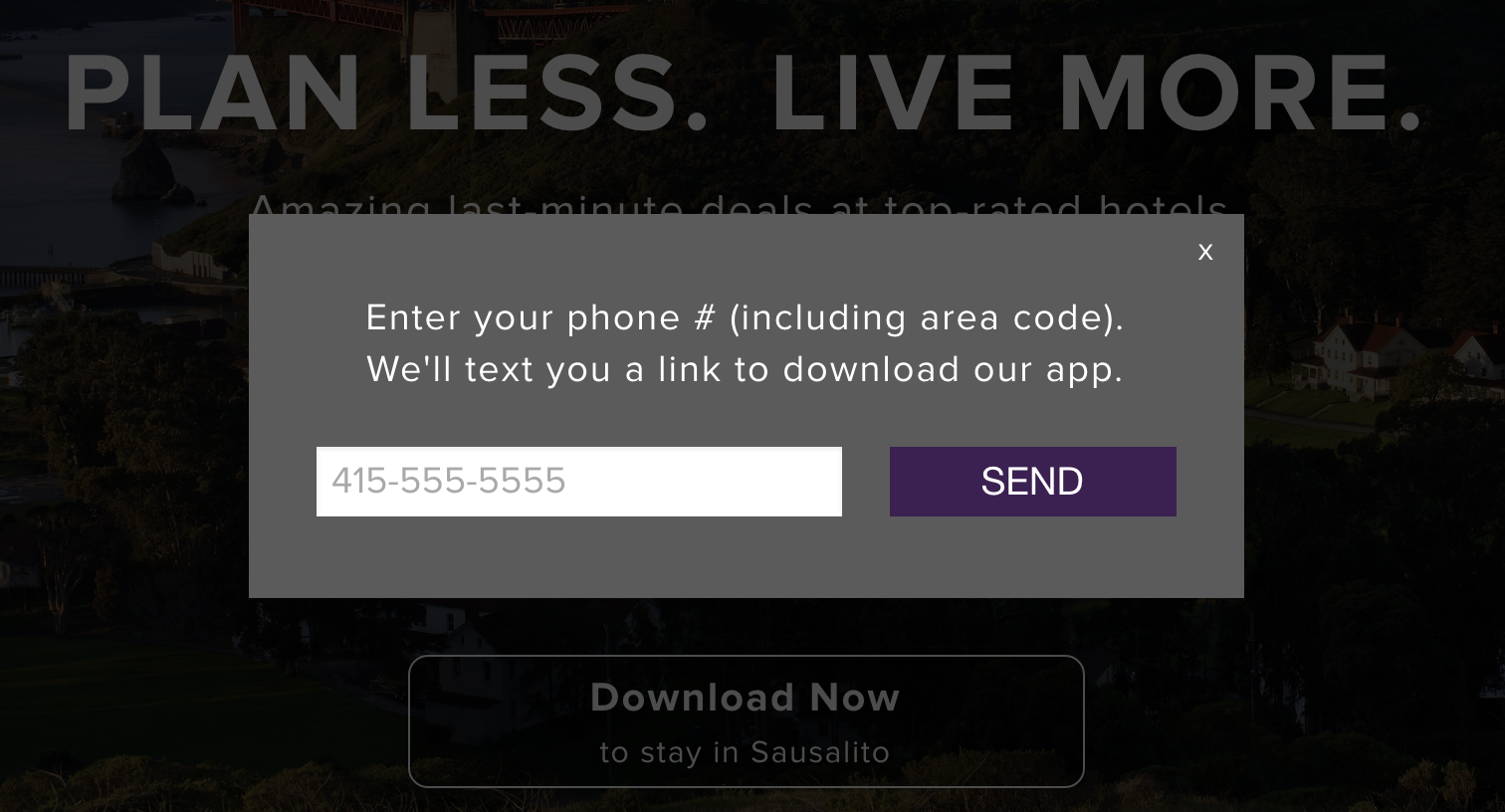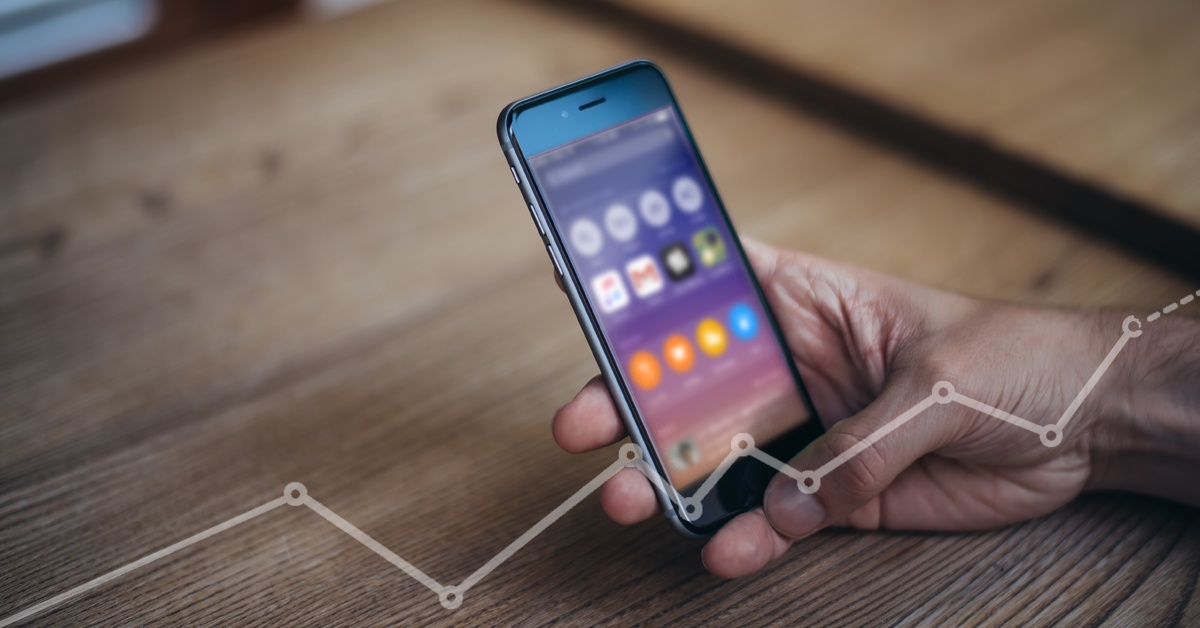All mobile developers want the same thing: to increase the number of people that download their app. Growth hacking is still everyone’s top priority. (Well, except for Bing Gordon. He wants you to worry about retention, but I’ll soon get to why these steps for app growth inherently increase retention.)
The Proven (and Unproven) Ways to Organically Increase App Downloads
We’ve all heard the stats about how competitive the app ecosystem is today, and how you’re destined to fail. But you plug along anyway. You’re an indie developer through and through. This app is your passion project and you’re determined to see it succeed. You’ve become immune to lure of the high-paying consulting gig your roommate comes home from and aren’t even annoyed that your mom still thinks you’re unemployed. But your app has hit a wall and you’re running out of ideas. If you were to come knocking at my door at this moment, looking for help, I’d tell you six things. One, you got lucky and picked the right door. Although I’m not an app developer, I get to interact with some of the best in the business on a daily basis. The next five things would be my top tips for increasing app downloads.
1. Use smart banners to convert mobile web to app users
Mobile web remains very important for mobile apps. Developers use it to drive brand awareness and traffic on mobile devices in ways that apps (currently) can’t. There are two main ways that users end up on a mobile website: through organic search or a link. On a mobile device, web search is one of the best ways to get discovered. Hopefully, when someone enters a query in Google (or Bing, ha!), your mobile site pops up. (Important: This is why it’s crucial you have a strong web presence with indexed content. Google will not automatically return your app content on search. Skip to step 4 for more on that.)
If you receive organic traffic to your mobile website, it’s up to you to design an experience that will drive people to your app. The tried and tested method for this is a smart banner. As simple as this seems, smart banners continue to drive mobile downloads. After analyzing 12 million link clicks across our platform, we found that 15.5% of smart banners clicks result in an install. That’s actually pretty high compared to most channels.
The second way users find themselves on a mobile website is from a link click. Sometimes, mobile web is used (correctly) as an interstitial before a new user is routed to the app store. In fact, compared to sending someone directly to the app store after a link click, sending them to a mobile web splash with a View in the App call-to-action converts users 2 to 6 times better. This is why we created Deepviews to allow developers without a website to benefit from this uplift in conversion. Web banners work because of Cialdini’s principle of reciprocity (please read this book if you haven’t already). By giving users a preview, or a free sample, of the app content you want them to see, they are more inclined to give the app a try.
2. Provide a personalized app onboarding
Onboarding continues to be a crucial step in converting valuable users. I won’t go into too many details since we’ve already covered this topic in length. In summary, the app store is a huge barrier to entry, but so is a generic welcome flow. By giving users a personalized experience, you provide them value right off the bat. My favorite type of personalized welcome utilizes the Cialdini principle of social proof (I’m serious, read the book). 77% of app users reported downloading an app in the past six months because of a recommendation from a friend or family. Why not remind users that they came from a friend’s recommendation when they open the app for the first time? Gogobot did this by showing the name and profile picture of the referring user and saw a 78% lift in conversion to sign up.
Now, I know what you’re saying to yourself: “The title of this article was about driving app downloads. Onboarding is after my users have already downloaded the app.” You caught me. But this is where Bing Gordon has my back. What good are app downloads if they don’t convert into active users? Spoiler alert: none. Well, except for maybe costing a lot of money and providing you with some vanity metrics. “Hey Mom! Yeah my app’s doing great. I got [*cough* bought] 100 new downloads this week [*cough* and I’ll never see them again].”
The best personalized welcomes rely on deep links to pass information through the app store that you want to show a new user. The newest research shows that day-1, day-7, and day-30 retention rates double for users who come from a deep link.
3. Give desktop users direct access to your app
This may come as a surprise, but links created from desktop via a text-yourself-the-app feature have the highest conversion to signup compared to other deep linking features. Hear me out. This is due to intention. If users have spent the time to enter their phone number, open a text, and click on a link, they’ve probably already made up their mind that they want the app. This is why we see an install rate of about 42% when it comes to text-me-the-app link clicks.
This is also why text-me-the-app is the default for Branch link clicks on desktop. But how can we make this the default when so many apps are mobile-first and don’t have a website? We’ll host a webpage for you if you don’t have one. Want an example? Other websites, like Hotel Tonight (above), build it seamlessly into their user experience when you click ‘Download Now’. All I beg is that you don’t rely on the badges below to drive web traffic to your app. If anyone has conversion numbers on desktop app store to app conversion, let me know.
4. Make your app discoverable.
App discovery is the hot new topic when it comes to driving downloads. Leading the charge are Google and Apple with their App Indexing and Spotlight Search. Although these are still unproven channels for driving app downloads, you have two of the most valuable companies in the world, who also happen to control the app ecosystem, working hard to make app discovery a possibility. I’d bet on seeing some significant improvements in app discovery very soon.
Apple’s recent iOS 9 update allows developers to list content with CSSearchableItem and CSSearchableIndex. (Before we get any further, make sure your iOS app is setup properly for deep linking. Done? Great.) Follow these instructions to setup your app for Spotlight Search without having to do any heavy lifting. Once you’ve done this, 1) your app content can be listed on cloud and local search, 2) you can deep link directly from Spotlight Search results, and 3) you can start tracking clicks and downloads coming from Spotlight. Win-win-win.
For Google to properly index your app, you need to have a website with corresponding one-to-one mapping to the content in your app. Pretty lame, right? Before you roll your eyes at Google and give up, there is a solution that will host and configure your indexing tags automatically. Similar to Spotlight Search, this solution will allow you to list your app content, deep link from search results, and track and measure installs.
As I mentioned, these are still unproven channels, but indexing your app content now will definitely get you ahead of the competition. You: “Mom! This Evan guy says I’m ahead of the curve!” Mom: “Get a real job.”
5. Focus on valuable content
Too often I hear people say, “I want my app to be viral,” as if virality is a special feature you can simply switch on. Virality is a goal, not a choice. What developers should be saying, or asking, is “why are some apps viral?”
Apps are most viral when they have good content. Good content is defined as content users think is worth sharing. The more your content is shared, the more users will download your app (assuming you build the sharing features for them to do so). It’s that easy. Not only is it more shareable, but as we discussed above, it will become more discoverable, as app search engines will likely reward highly shared app content with higher search results. Creating good content is not an easy solution. It’s no get-rich-quick scheme (like ASO), where you’re promised immediate results. It’s a solution for long-term success and discoverability.
We’re at a time when creating a mobile app is like creating a website before Google. Once app search and discovery becomes prominent, it will change the game for everyone.
Think something is missing from this list to increase app downloads? Let us know in the comments below.






















